Total Lunar Eclipse March 2007
4 March 2007
A total lunar eclipse was visible from Europe and a large part of the world in the night of Saturday, 3 March. The Moon passed through the Earth's shadow, with the greatest eclipse occuring at around 23:21 UT. The totality lasted for 73 minutes.The eclipse was visible in all of Europe, Africa, South America, and in nearly all of North America, Asia and Australia. The partial eclipse phase started at 21:30:22 UT, when the Moon entered the Earth's Penumbra. The totality lasted from 22:44:13 UT until 23:57:37 UT, when the Moon wss entirely within the Earth's Umbral shadow. The following partial eclipse phase lasted another 74 minutes, ending at 01:11:28 UT.
| Event | Time (UT) |
| Penumbral Eclipse Begins | 20:18:11 |
| Partial Eclipse Begins | 21:30:22 |
| Total Eclipse Begins | 22:44:13 |
| Greatest Eclipse | 23:20:56 |
| Total Eclipse Ends | 23:57:37 |
| Partial Eclipse Ends | 01:11:28 |
| Penumbral Eclipse Ends | 02:23:44 |
Eclipse Images
ESTEC, Noordwijk, Netherlands
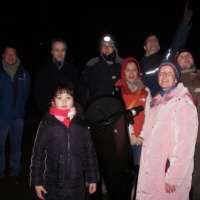 |
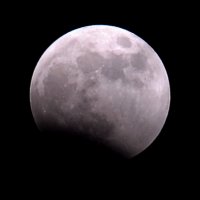 |
|
Observers at ESTEC in Noordwijk |
Early partial phase |
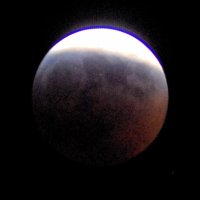 |
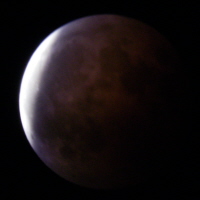 |
|
During the first partial phase |
The Moon shortly after totality |
Leiden, Netherlands
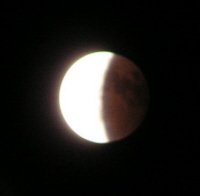 |
|
The Moon after totality at 00:35 UT |
Culcheth, Cheshire, United Kingdom
 |
|
Composite of images taken between 21:25 and 22:55 UT |
Gauteng, South Africa
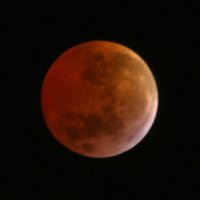 |
|
The Moon during totality, 23:29 UT |
Juazeiro do Norte, Ceará, Brazil
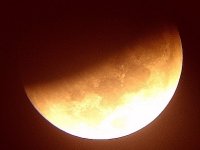 |
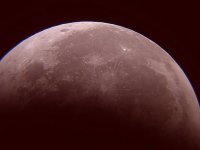 |
|
The Moon at 22:07 UT |
After totality, 00:35 UT |
SMART-1 Search During Lunar Eclipse
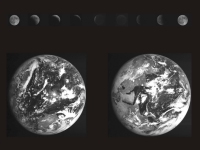 |
|
The Earth and Moon during the total lunar eclipse of 27.10.2004 |
On 3 September 2006, the SMART-1 mission ended by a controlled impact with the lunar surface.
We call the community and public to observe the site of the SMART-1 lunar impact flash and debris in Lacus Excellentiae (lake of Excellence). In particular during the total lunar eclipse. The coordinates of the SMART-1 impact site are longitude 46.2° West, latitude 34.4° South.
See also the links on the right-hand side for more information on the SMART-1 impact site.
You are invited to share your pictures of this total lunar eclipse, by sending them to scitech.editorial esa.int or Bernard.Foing
esa.int or Bernard.Foing esa.int.
esa.int.
Lunar Geography
A lunar eclipse also gives an opportunity to observe the Moon and learn more about the lunar geography, as various craters will be hidden and emerge from shadow at well defined times. The table below lists the times during which various craters entered and emerged from the Earth's shadow during this total eclipse. Times are given in UT with the data from Fred Espenak.
| Crater | Enters Shadow (UT) |
Exits Shadow (UT) |
| Grimaldi | 21:35 | 00:06 |
| Billy | 21:37 | 00:13 |
| Campanus | 21:43 | 00:26 |
| Kepler | 21:49 | 00:13 |
| Tycho | 21:49 | 00:36 |
| Aristarchus | 21:54 | 00:06 |
| Copernicus | 21:57 | 00:22 |
| Pytheas | 22:02 | 00:19 |
| Timocharis | 22:08 | 00:22 |
| Dionysius | 22:13 | 00:45 |
| Manilius | 22:13 | 00:37 |
| Menelaus | 22:17 | 00:41 |
| Plinius | 22:21 | 00:45 |
| Goclenius | 22:22 | 01:01 |
| Plato | 22:23 | 00:17 |
| Taruntius | 22:27 | 00:59 |
| Langrenus | 22:27 | 01:07 |
| Eudoxus | 22:28 | 00:30 |
| Aristoteles | 22:31 | 00:28 |
| Proclus | 22:31 | 00:56 |
Contact
Bernard H. Foing
SMART-1 project scientist
Bernard.Foing esa.int
esa.int

